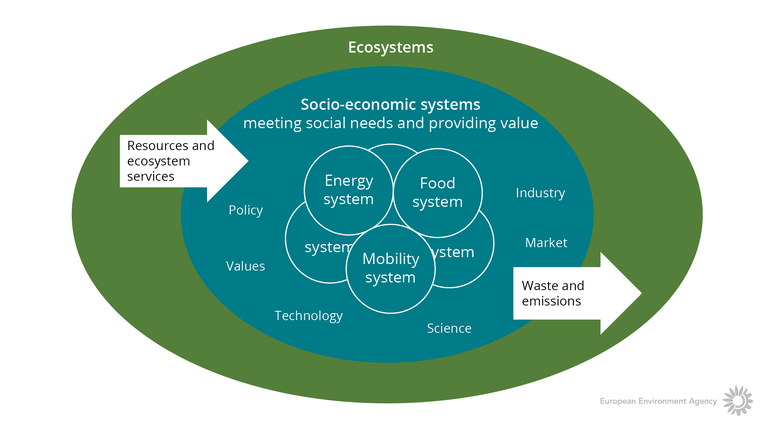References
[1] World Bank (2006), Where is the wealth of nations - Measuring capital for the 21st century, The World Bank, Washington DC.
[2] FFTF (2014), Forum for the Future — The five capitals, accessed 20 March 2014.
[3] CICES (2013), CICES 2013 — Towards a Common International Classification of Ecosystem Services, accessed 21 March 2014.
[4] MA (2005), Millennium Ecosystem Assessment — Ecosystems and human well‑being: health — synthesis report, Island Press, New York, USA.
[5] EU (2000), Directive 2000/60/EC of the European Parliament and of the Council of 23 October 2000 establishing a framework for Community action in the field of water policy, OJ L 327, 22.12.2000, pp. 1–73.
[6] EU (2008), Directive 2008/56/EC of the European Parliament and of the Council of 17 June 2008 establishing a framework for community action in the field of marine environmental policy, OJ L 164, 25.6.2008, pp. 19–40.
[7] EU (2008), Directive 2008/50/EC of the European Parliament and of the Council of 21 May 2008 on ambient air quality and cleaner air for Europe, OJ L 152, 11.6.2008, pp. 1–44.
[8] EU (1992), Council Directive 92/43/EEC of 21 May 1992 on the conservation of natural habitats and of wild fauna and flora, OJ L 206, 22.7.1992, p. 7.
[9] EU (2009), Directive 2009/147/EC of the European Parliament and of the Council of 30 November 2009 on the conservation of wild birds, OJ L 20, 26.1.2010, pp. 7–25.
[10] Council of Europe (2000), European Landscape Convention.
[11] EC (2011), Communication from the Commission to the European Parliament, the Council, the European Economic and Social Committee and the Committee of the Regions — Our life insurance, our natural capital: an EU biodiversity strategy to 2020, COM/2011/0244 final.
[12] Maes, J., Paracchini, M. L., Zulian, G., European Commission, Joint Research Centre and Institute for Environment and Sustainability (2011), A European assessment of the provision of ecosystem services: towards an atlas of ecosystem services, Publications Office, Luxembourg.
[13] Egoh, B., Dunbar, M. B., Maes, J., Willemen, L., Drakou, E. G., European Commission, Joint Research Centre and Institute for Environment and Sustainability, (2012), Indicators for mapping ecosystem services a review, Publications Office, Luxembourg.
[14] Maes J, Teller A, Erhard M, Liquete C, Braat L, Berry P, Egoh B, Puydarrieux P, Fiorina F, Santos F, Paracchini ML, Keune H, Wittmer H, Hauck J, Fiala I, Verburg PH, Condé S, Schägner JP, San Miguel J, Estreguil C, Ostermann O, Barredo JI, Pereira HM, Stott A, Laporte V, Meiner A, Olah B, Royo Gelabert E, Spyropoulou R, Petersen JE, Maguire C, Zal N, Achilleos E, Rubin A, Ledoux L, Brown C, Raes C, Jacobs S, Vandewalle M, Connor D, Bidoglio G (2013), Mapping and Assessment of Ecosystems and their Services. An analytical framework for ecosystem assessments under action 5 of the EU biodiversity strategy to 2020. Publications office of the European Union, Luxembourg.
[15] EU (2013), Decision No 1386/2013/EU of the European Parliament and of the Council of 20 November 2013 on a General Union Environment Action Programme to 2020 ‘Living well, within the limits of our planet’, OJ L 354, 28.12.2013, pp. 171–200.
[16] TEEB, (2010), The Economics of Ecosystems and Biodiversity — Ecological and economic foundations, Earthscan, London and Washington.
[17] EEA (2010), Scaling up ecosystem benefits — a contribution to The Economics of Ecosystems and Biodiversity (TEEB) study, EEA Report No 4/2010, European Environment Agency, Copenhagen.
[18] EEA (2014), Assessment of global megatrends — an update, accessed 11 March 2014.
[19] EC (2009), Communication from the Commission to the Council and the European Parliament — GDP and beyond : measuring progress in a changing world, COM/2009/0433 final.
[20] EC (2014), Beyond GDP — Measuring progress, true wealth, and the well-being of nations, accessed 21 March 2014.


Document Actions
Share with others